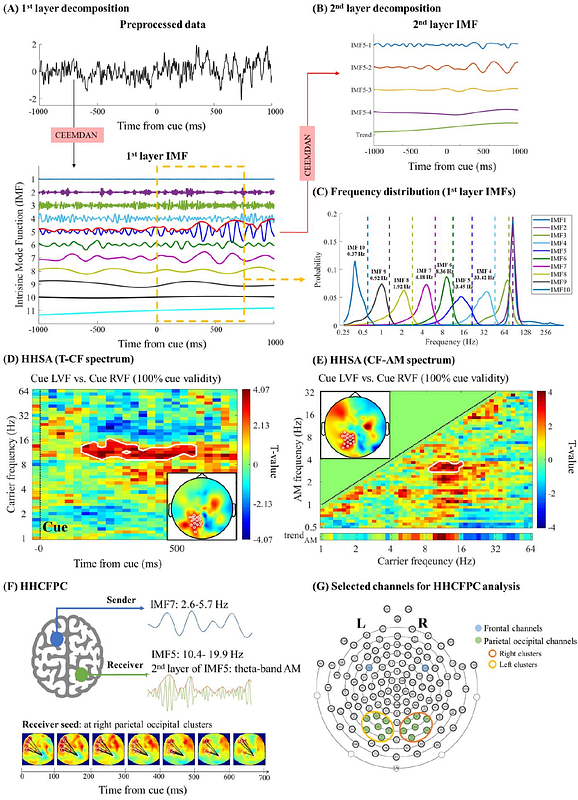Certain spatial prediction decreases the rhythm of attentional sampling

Certain spatial prediction decreases the rhythm of attentional sampling
Huang, Y.-N.; Liang, W.-K.; Juan, C.-H.
AbstractRecent studies demonstrate that behavioral performance during visual spatial attention fluctuates at theta (4-8 Hz) and alpha (8-16 Hz) frequencies, linked to phase amplitude coupling (PAC) of neural oscillations within the visual and attentional system. Moreover, previous research suggests that attentional sampling rhythms are task-dependent, evidenced by varying behavioral performance at different frequencies. To investigate the role of prior spatial prediction, we employed an adaptive discrimination task with variable cue-target onset asynchronies ranging from 300 ms to 1300 ms in steps of 20 ms, while manipulating spatial prediction via cue validity (100% & 50%), with concurrent Electroencephalography (EEG) recording. We applied adaptive data analytical methods, namely Holo-Hilbert Spectral Analysis (HHSA) and Holo-Hilbert Cross-frequency Phase Clustering (HHCFPC). Our findings indicate that response precision for near-threshold Landolt rings fluctuates at the theta-band (4 Hz) under certain predictions and at alpha & beta bands (15 & 19 Hz) with uncertain predictions. Furthermore, spatial prediction strengthens theta-alpha modulations at parietal-occipital areas, frontal theta phase and parietal-occipital alpha amplitude coupling, and within frontal theta phase/ alpha amplitude coupling. Notably, during the pre-target period, beta-modulated gamma oscillations in parietal-occipital areas predict response precision in spatially uncertain conditions, while frontal theta phase and parietal-occipital alpha amplitude coupling predict response precision in spatially certain conditions. In conclusion, our study not only strengthens the notion that the speed of periodic sampling in perception depends on the task at hand but also highlights the critical role of spatial prediction in attentional sampling rhythms.